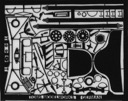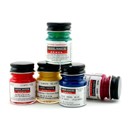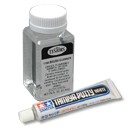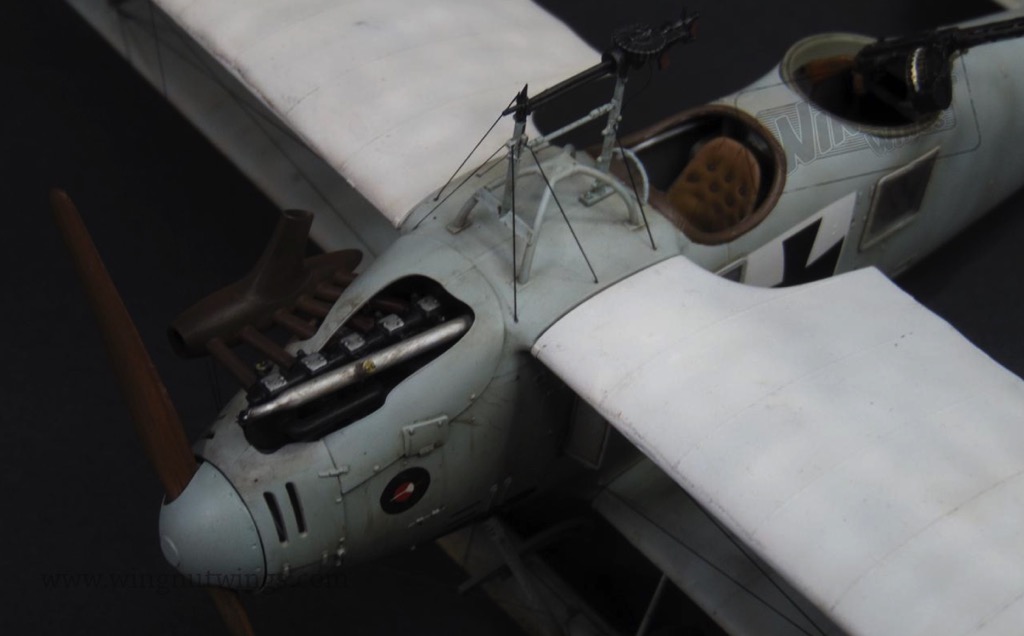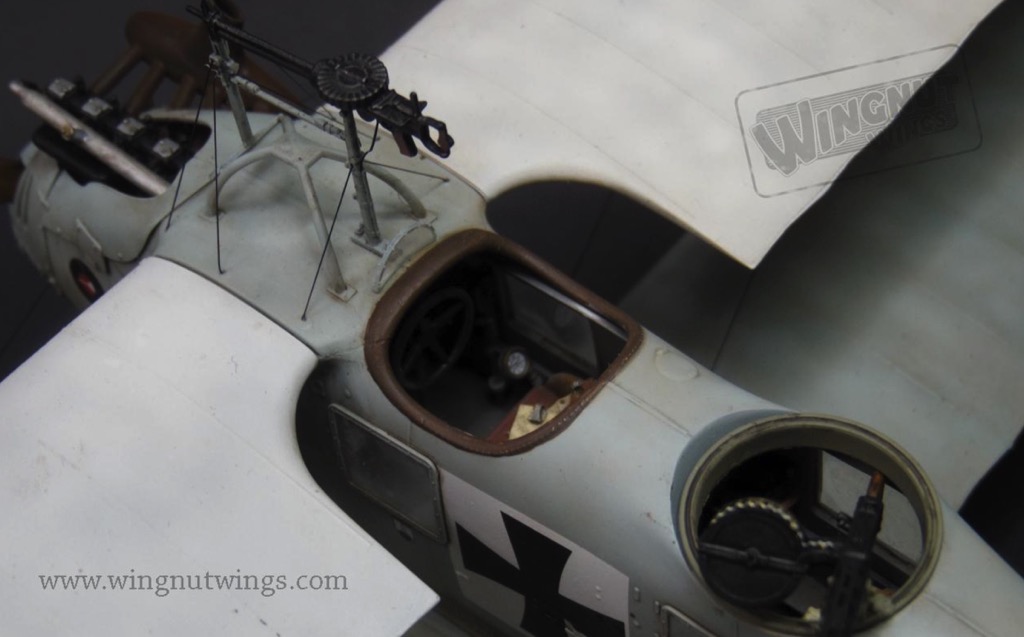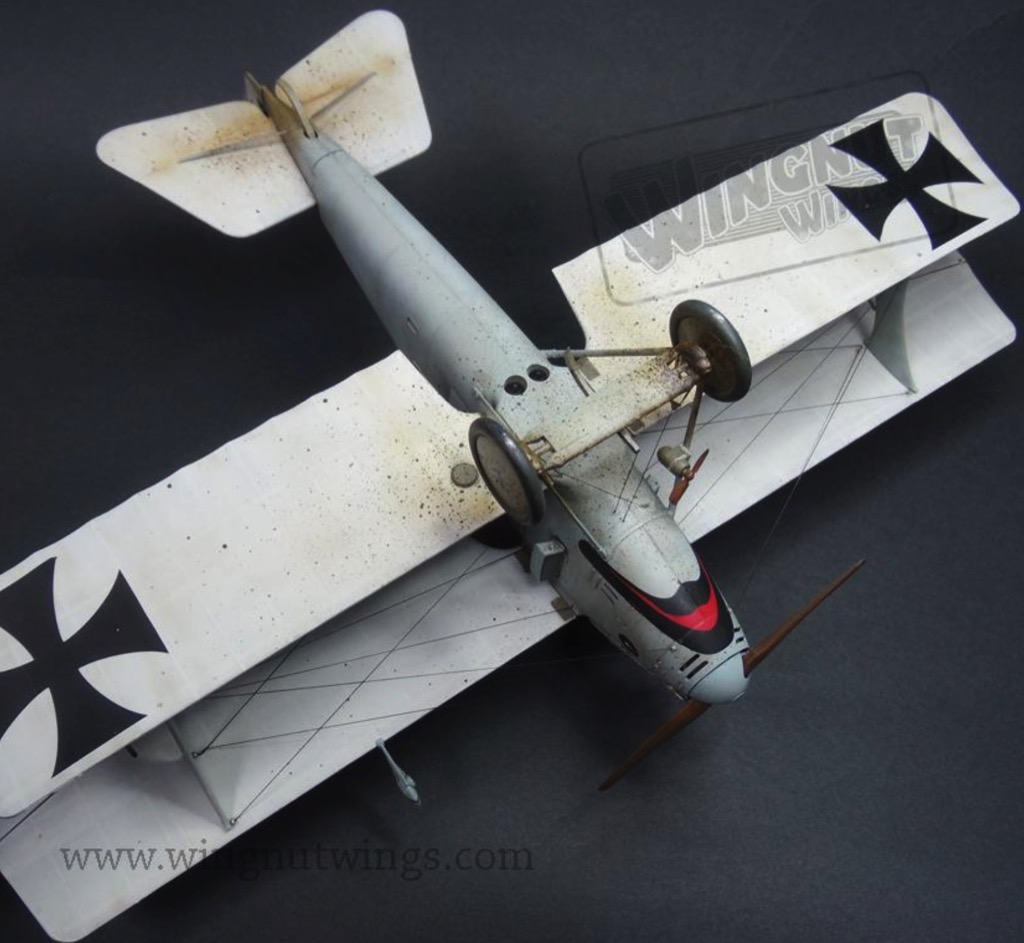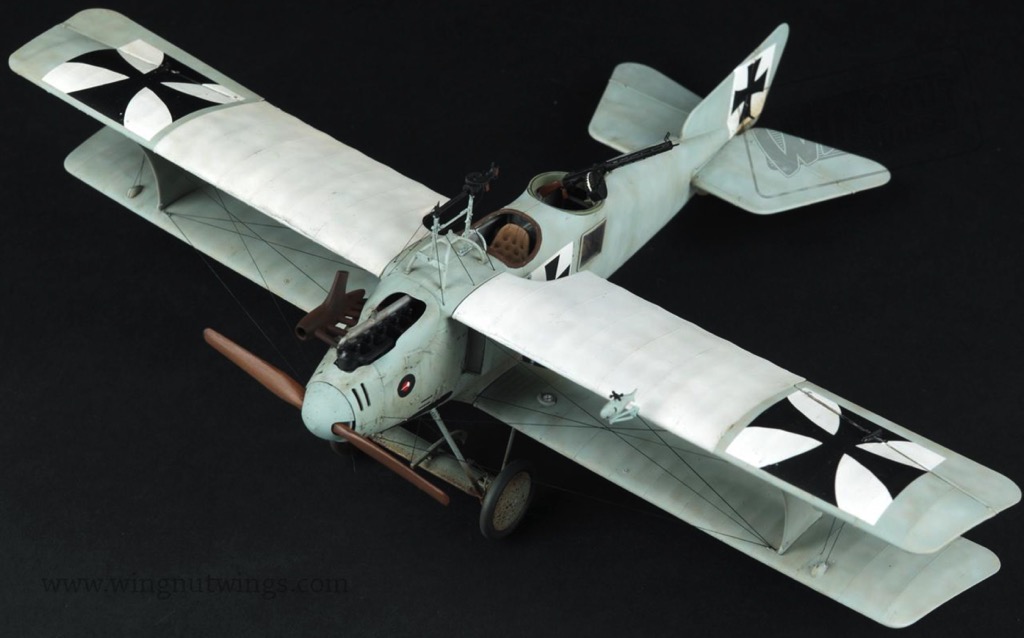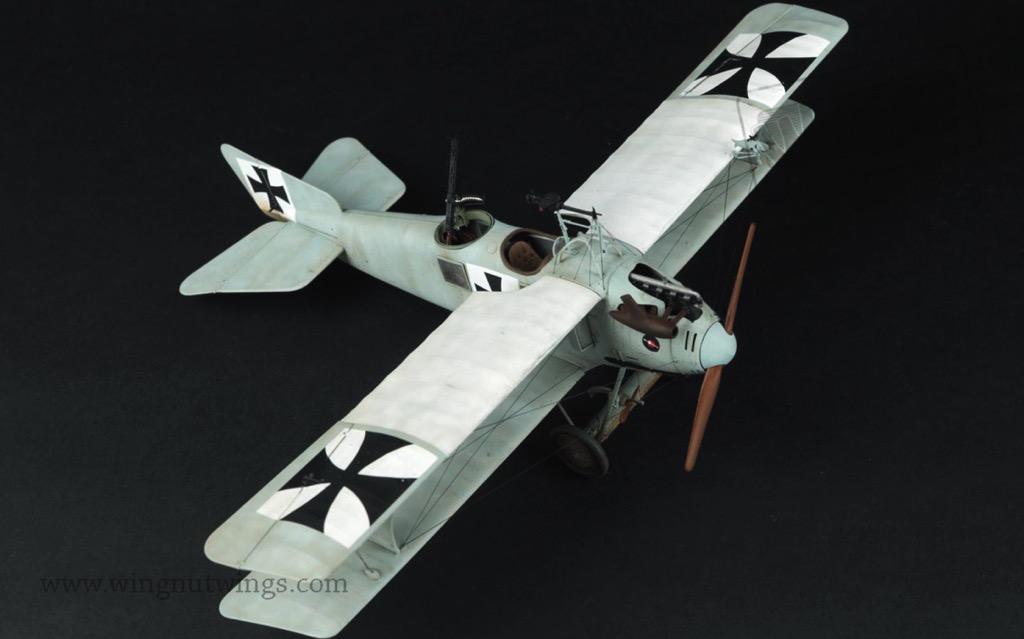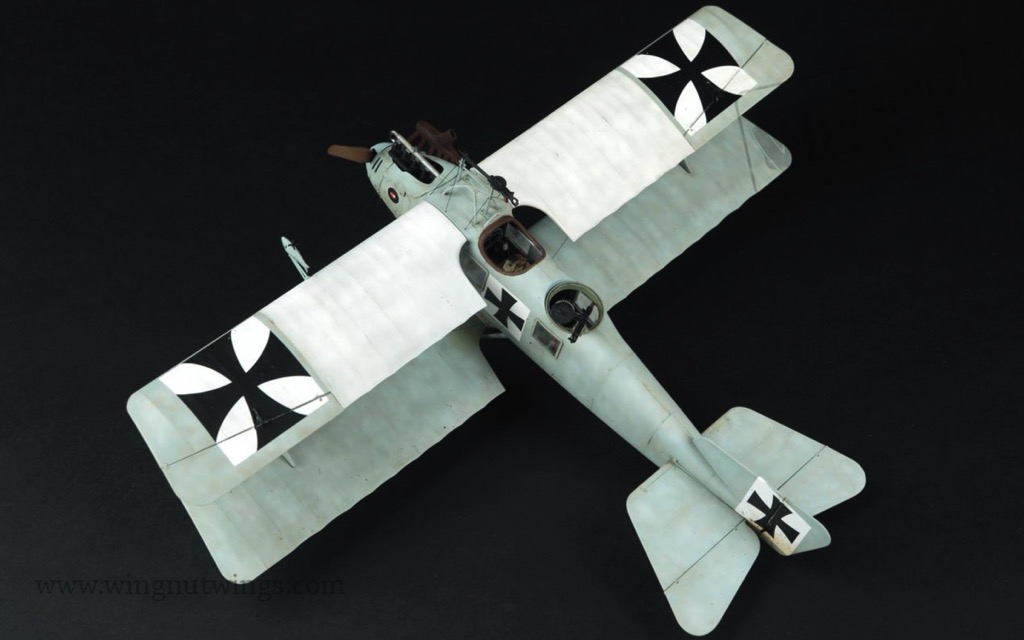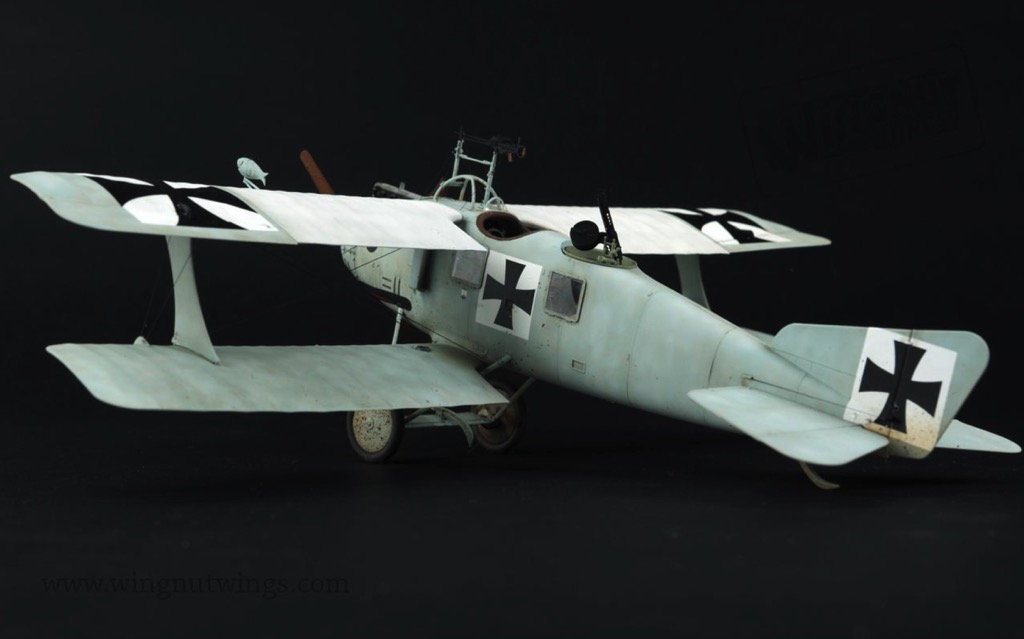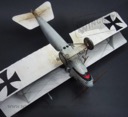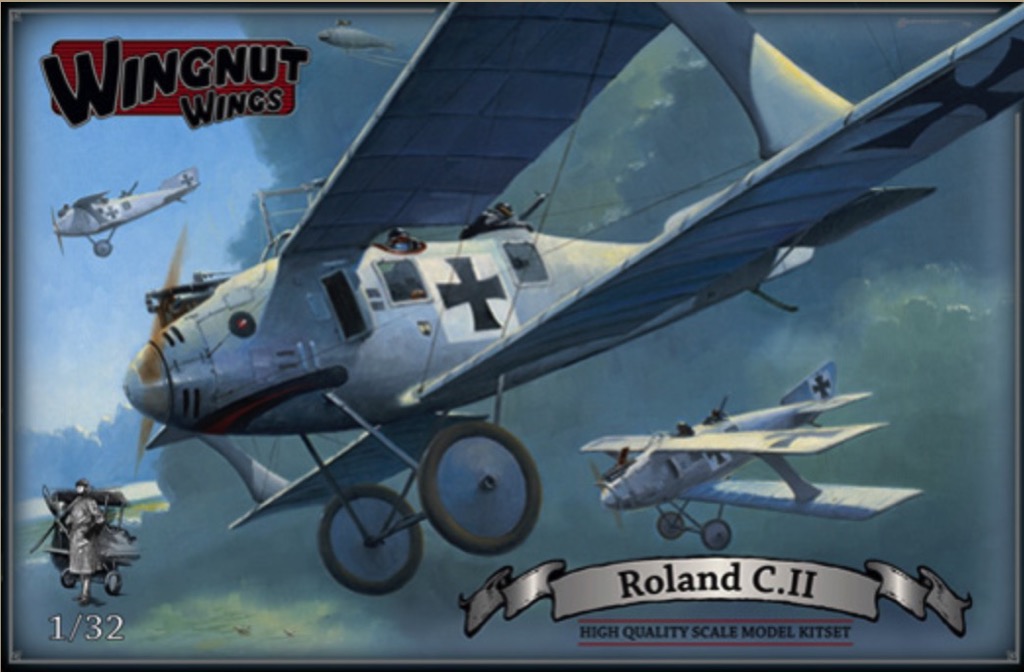

Roland C.II
Unassembled plastic model kit with photo-etch parts.
Don't forget building supplies!
DISCONTINUED This product has been discontinued
and is no longer available.List price: $163.75
You pay: $119.99
(All prices in U.S. Dollars)
Manufacturer: Wingnut Wings
Stock Number: WNW 32026
Scale: 1/32
View all products of type "Roland C.II"
and is no longer available.List price: $163.75
You pay: $119.99
(All prices in U.S. Dollars)
Manufacturer: Wingnut Wings
Stock Number: WNW 32026
Scale: 1/32
View all products of type "Roland C.II"
This model kit requires assembly. Cement, paint and other construction materials not included unless specifically stated in the description.
Features:
The prototype Roland C.II took to the air in October 1915 and proved to be 30kph faster than other comparable aircraft and faster than most single seat fighters. Its smooth aerodynamic fuselage, 160hp Daimler-Mercedes engine and small size enabled it to go about its intended tasks of reconnaissance and artillery spotting safe in the knowledge that it could outrun almost any enemy fighters it encountered. Unfortunately the deep fuselage hindered airflow over the tailplane adversely affecting maneuverability and the wings severely restricted the pilot's downward visibility which resulted in many landing accidents.
50 Roland C.II were ordered in December 1915 and featured a rounded rollover hoop, steering wheel control column, aileron control cables routed through the bottom wings and a Parabellum LMG 14 machine gun for the observer. A 2nd order for 25 aircraft placed in March 1916 featured numerous improvements including strengthened wings and the addition of a fixed forward firing lMG 08 'Spandau' machine gun under an angled roll over hoop. These aircraft were to become known as the Roland C.IIa. Later production C.IIa manufactured by both Roland and Linke-Hofmann Werke featured a stick type control column with aileron controls routed through the top wings via rods and tubes (a feature common on subsequent Roland designs). The last production batch of C.IIa from Roland finally featured an enlarged fin for improved maneuverability. Most Roland C.II/C.IIa had been retired from front line service by mid 1917 although many soldiered on as trainers. Any history of this important aircraft here is of necessity very brief, therefore we encourage you to seek out any, or all, of the reference books mentioned below for a more thorough understanding.
WW1 colour schemes are contentious at the best of times and we have done our best to provide what we consider to be accurate painting information for this model. Unfortunately the conventional wisdom of an all over pale blue Roland C.II just does not stand up to close scrutiny. The Roland C.II appeared at a time when camouflage was only just being introduced on German aircraft, resulting in many varied colour scheme possibilities. The interior of the fuselage was sealed with a paint which was most likely bluish-grey (or possibly grey-green) with metal brackets and fittings finished in grey-green, black or overpainted with the interior colour. The exterior of the fuselage, metal panels and fittings etc of the Roland C.II and early C.IIa were all painted a uniform pale colour at the factory, the exact colour of which is open to some debate with pilot's quoting 'light blue', 'cream' and 'light yellow'. The wings and fabric tailplane areas of Roland C.II and early C.IIa appear to have been finished in translucent Clear Doped Linen (CDL), bleached (white) linen or had their upper surfaces overpainted, apparently in a similar colour to the fuselage, in a course 'scumble' finish. The upper surfaces of many early linen covered German aircraft received a coat of white or pale creamy yellow opaque dope/paint to protect the fabric from harsh UV rays, and many Roland C.II would appear to have received this treatment. Additionally many Roland C.II were camouflaged in the field, initially with tinted green or brown glazes and later with similarly coloured opaque camouflage paints. Later production Roland C.IIa featured darker camouflage colours applied at the factory. The various camouflage schemes and personal markings applied to German aircraft of the Great War have attracted more than their fair share of debate over the years and, while we have been as meticulous as we could be, I'm sure some will not find our choices to their liking and impassioned debate will continue to rage on amongst modellers.
- Relatively simple rigging
- High quality Cartograf decal sheet for 5 German aircraft
- 295 high quality injection moulded plastic parts
- Optional radiator/header tanks, early and late tailplane struts and captured Lewis gun armament
- Highly detailed 48 part Daimler-Mercedes D.III engine
- 8 photo-etched metal detail parts including LMG 14 Parabellum machine gun cooling jacket
- Fine in scale rib tape detail
- Full rigging diagrams
The prototype Roland C.II took to the air in October 1915 and proved to be 30kph faster than other comparable aircraft and faster than most single seat fighters. Its smooth aerodynamic fuselage, 160hp Daimler-Mercedes engine and small size enabled it to go about its intended tasks of reconnaissance and artillery spotting safe in the knowledge that it could outrun almost any enemy fighters it encountered. Unfortunately the deep fuselage hindered airflow over the tailplane adversely affecting maneuverability and the wings severely restricted the pilot's downward visibility which resulted in many landing accidents.
50 Roland C.II were ordered in December 1915 and featured a rounded rollover hoop, steering wheel control column, aileron control cables routed through the bottom wings and a Parabellum LMG 14 machine gun for the observer. A 2nd order for 25 aircraft placed in March 1916 featured numerous improvements including strengthened wings and the addition of a fixed forward firing lMG 08 'Spandau' machine gun under an angled roll over hoop. These aircraft were to become known as the Roland C.IIa. Later production C.IIa manufactured by both Roland and Linke-Hofmann Werke featured a stick type control column with aileron controls routed through the top wings via rods and tubes (a feature common on subsequent Roland designs). The last production batch of C.IIa from Roland finally featured an enlarged fin for improved maneuverability. Most Roland C.II/C.IIa had been retired from front line service by mid 1917 although many soldiered on as trainers. Any history of this important aircraft here is of necessity very brief, therefore we encourage you to seek out any, or all, of the reference books mentioned below for a more thorough understanding.
WW1 colour schemes are contentious at the best of times and we have done our best to provide what we consider to be accurate painting information for this model. Unfortunately the conventional wisdom of an all over pale blue Roland C.II just does not stand up to close scrutiny. The Roland C.II appeared at a time when camouflage was only just being introduced on German aircraft, resulting in many varied colour scheme possibilities. The interior of the fuselage was sealed with a paint which was most likely bluish-grey (or possibly grey-green) with metal brackets and fittings finished in grey-green, black or overpainted with the interior colour. The exterior of the fuselage, metal panels and fittings etc of the Roland C.II and early C.IIa were all painted a uniform pale colour at the factory, the exact colour of which is open to some debate with pilot's quoting 'light blue', 'cream' and 'light yellow'. The wings and fabric tailplane areas of Roland C.II and early C.IIa appear to have been finished in translucent Clear Doped Linen (CDL), bleached (white) linen or had their upper surfaces overpainted, apparently in a similar colour to the fuselage, in a course 'scumble' finish. The upper surfaces of many early linen covered German aircraft received a coat of white or pale creamy yellow opaque dope/paint to protect the fabric from harsh UV rays, and many Roland C.II would appear to have received this treatment. Additionally many Roland C.II were camouflaged in the field, initially with tinted green or brown glazes and later with similarly coloured opaque camouflage paints. Later production Roland C.IIa featured darker camouflage colours applied at the factory. The various camouflage schemes and personal markings applied to German aircraft of the Great War have attracted more than their fair share of debate over the years and, while we have been as meticulous as we could be, I'm sure some will not find our choices to their liking and impassioned debate will continue to rage on amongst modellers.

Copyright © 2005-2024 Scale Hobbyist, all rights reserved















